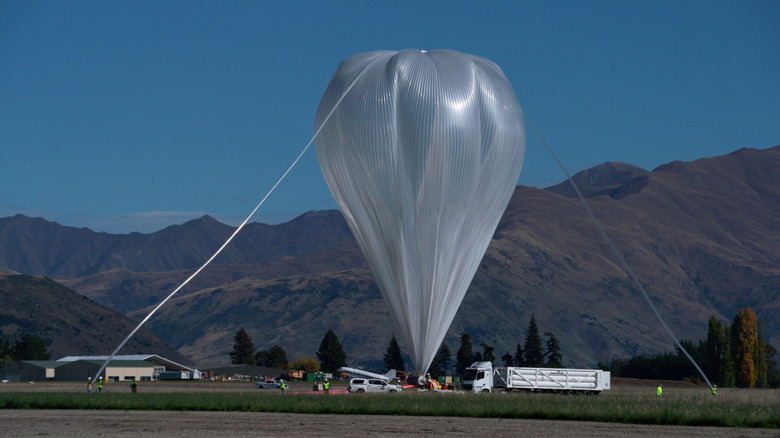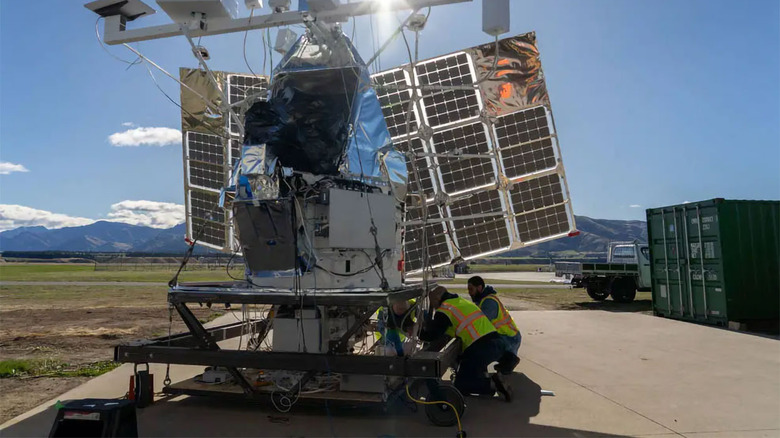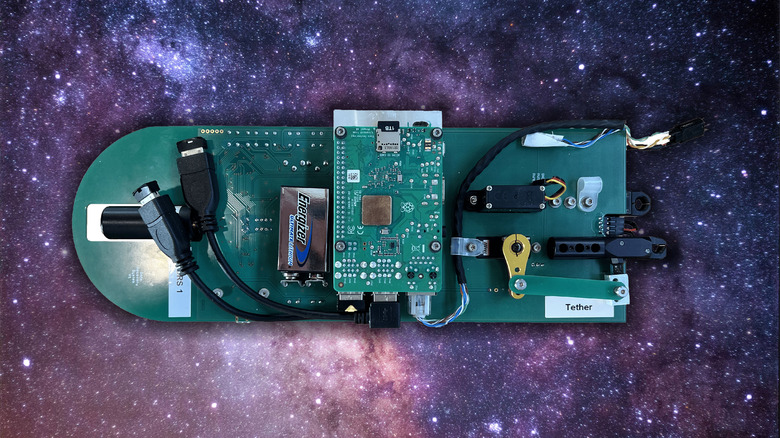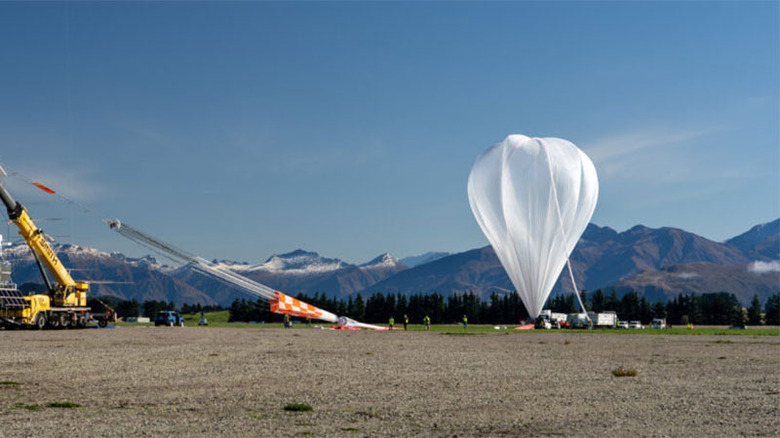Small Device, Big Science: The Role Of A Raspberry Pi In NASA's Super-Pressure Balloon
Scientific balloons have proven to be one of the more useful tools that NASA employs to collect data on Earth's high altitudes, weather patterns, and our universe. Established over 30 years ago, NASA's Balloon Program has long provided scientists with critical information on the stratosphere.
A case in point is NASA's Super-Pressure Ballon Imaging Telescope (SuperBIT), which deployed on April 16, 2023, from Wānaka, New Zealand, and completed a record-setting five full circuits around Earth's Southern Hemisphere at 108,000 feet. Nicknamed Pumpkins because of their shape, Super-Pressure Balloons are completely sealed and meant to fly ultra-long distances at high altitudes. The balloons themselves are massive, with the SuperBIT measuring 18.8 million cubic feet, according to NASA.
Made of a thin plastic film called polyethylene, the helium gas balloon has a host of sophisticated onboard sensors and equipment, including solar panels that power the balloon's systems. However, you may be surprised to learn that data collected from this sophisticated piece of technology actually used Rasberry Pi to store data during its flight — the same basic technology often used to teach students coding skills.
Raspberry Pi saved the Super-Pressure Balloon from connection failures
Originally, Elon Musk's Starlink and the U.S. Tracking and Data Relay Satellite System (TDRSS) were meant to transmit data from the NASA SuperBIT Super-Pressure Balloon down to scientists and engineers. However, this system failed, with the Starlink connection going offline on May 1, 2023, and TDRSS becoming unstable later that same month on May 24. Luckily, sets of Rasberry Pi recovery capsules with solid-state drives enabled engineers to retrieve the data regardless.
A total of four Data Recovery System (DRS) capsules were attached to the balloon and telescope before launch, each with 5TB of solid-state data storage. Each capsule had a Global Navigation Satellite System (GNSS) receiver to determine its location; then, an Iridium Short-Burst Data transceiver broadcasted its location so NASA could retrieve it. Raspberry Pi communicated with the balloon using the hardware's built-in WiFi.
These DRS capsules powered by Rasberry Pi ultimately came in handy. Not only did the Starlink and TDRSS connection get interrupted, but the Super-Pressure Baloon and telescope would eventually be destroyed as it crashed off the coast of Argentina. Though the data was eventually recovered from the remains of the onboard drives, the failsafe for storing the archived data on the deployable recovery capsules was an invaluable discovery.
Raspberry Pi technology is simple but surprisingly useful
Each DRS capsule contained a Raspberry Pi 3B, a single-board computer attached via ethernet cord to a 300-millimeter by 125-millimeter circuit board. Each capsule was powered by a 24-volt direct current while onboard the balloon, with two 9-volt lithium batteries powering the capsules on its descent. Two SD card readers were plugged directly into the USB ports at the bottom of the Raspberry Pi 3B, with the other two ports being occupied by extension cables to help reduce heat production in the sockets.
Initially, it was planned that one DRS capsule would be deployed every 20 days starting on day 40 of the SuperBIT's flight, but ultimately, the balloon would only fly 39 and a half days in total, necessitating the need to deploy the capsules early. May 25, 2023, was be day that the SuperBIT Balloon crash landed. In the early morning of the same day, the DRS capsules powered by Rasberry Pi descended to Earth. Small orange parachutes attached to the capsules ensured their viability upon landing.
Raspberry Pi DRS capsules weren't perfect but got the job done
Two DRS capsules were released over Santa Cruz Province, Argentina. Though the capsules didn't report their location as they made their descent to Earth (as they were supposed to), both reported their locations upon landing safely. Even though both were launched simultaneously, they eventually ended up nearly 4 miles away.
Predictions on the landing locations and descent trajectories for the capsules were less effective than planned in a 2019 test due to a confluence of factors, including high latency, the untimely release, and the early ultimate descent of the Super-Pressure Balloon. Out of the four Raspberry Pi capsules onboard the balloon, three remained operational, with one of the four failing to respond after launch.
Ultimately, Rasberry Pi proved its use in NASA's Super-Pressure Balloon by providing a basic analog solution to recovering data for weather balloon missions. Not only was it able to aggregate and store critical mission analytics, but it also provided a backup plan if communications with weather balloons failed or the balloon was destroyed, as was the case with the SuperBIT. Unlike the other hardware on NASA's Super-Pressure Balloon, the Raspberry Pi DRS capsules were also incredibly affordable, proving that reliable solutions don't always have to be expensive.



